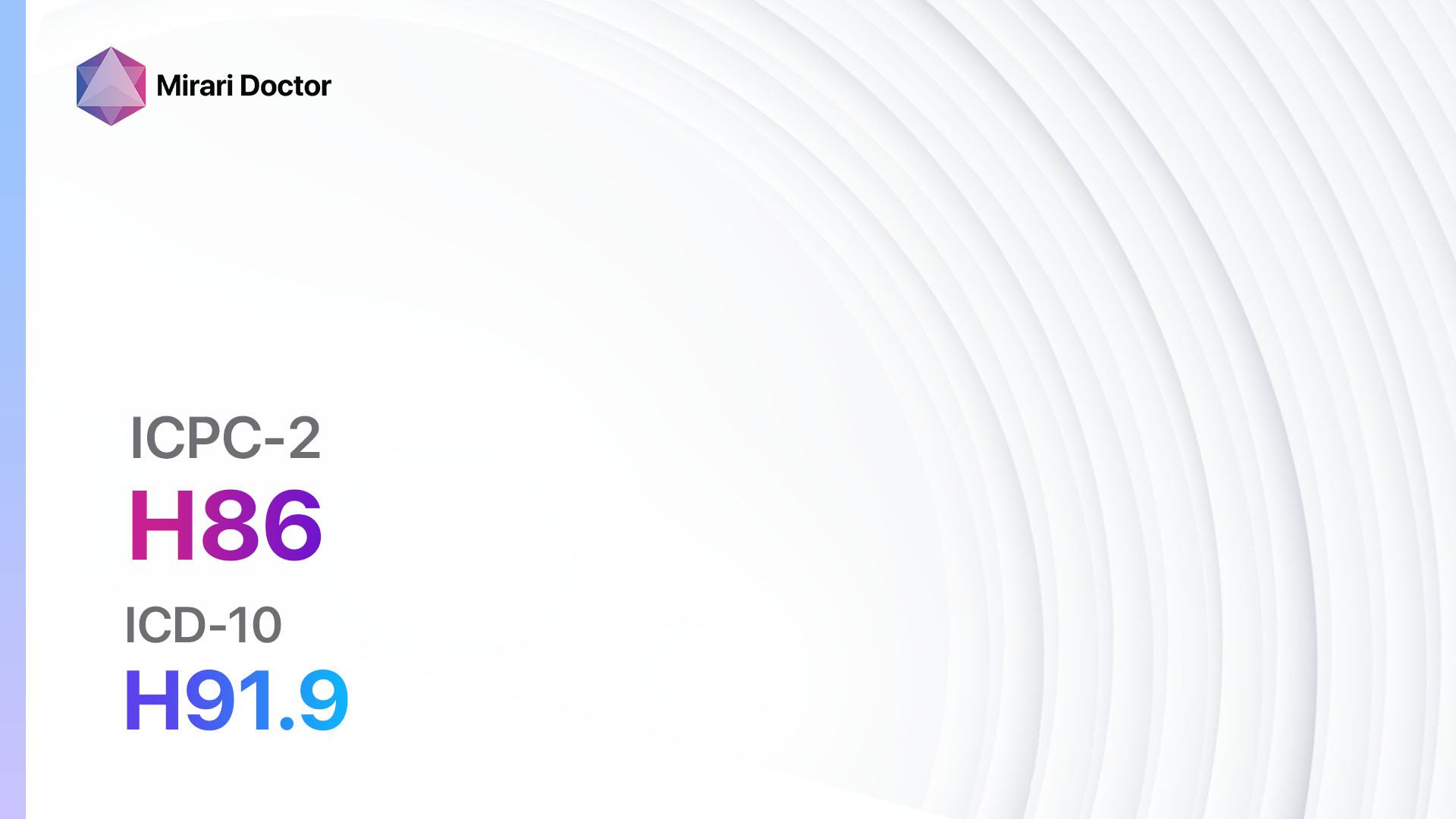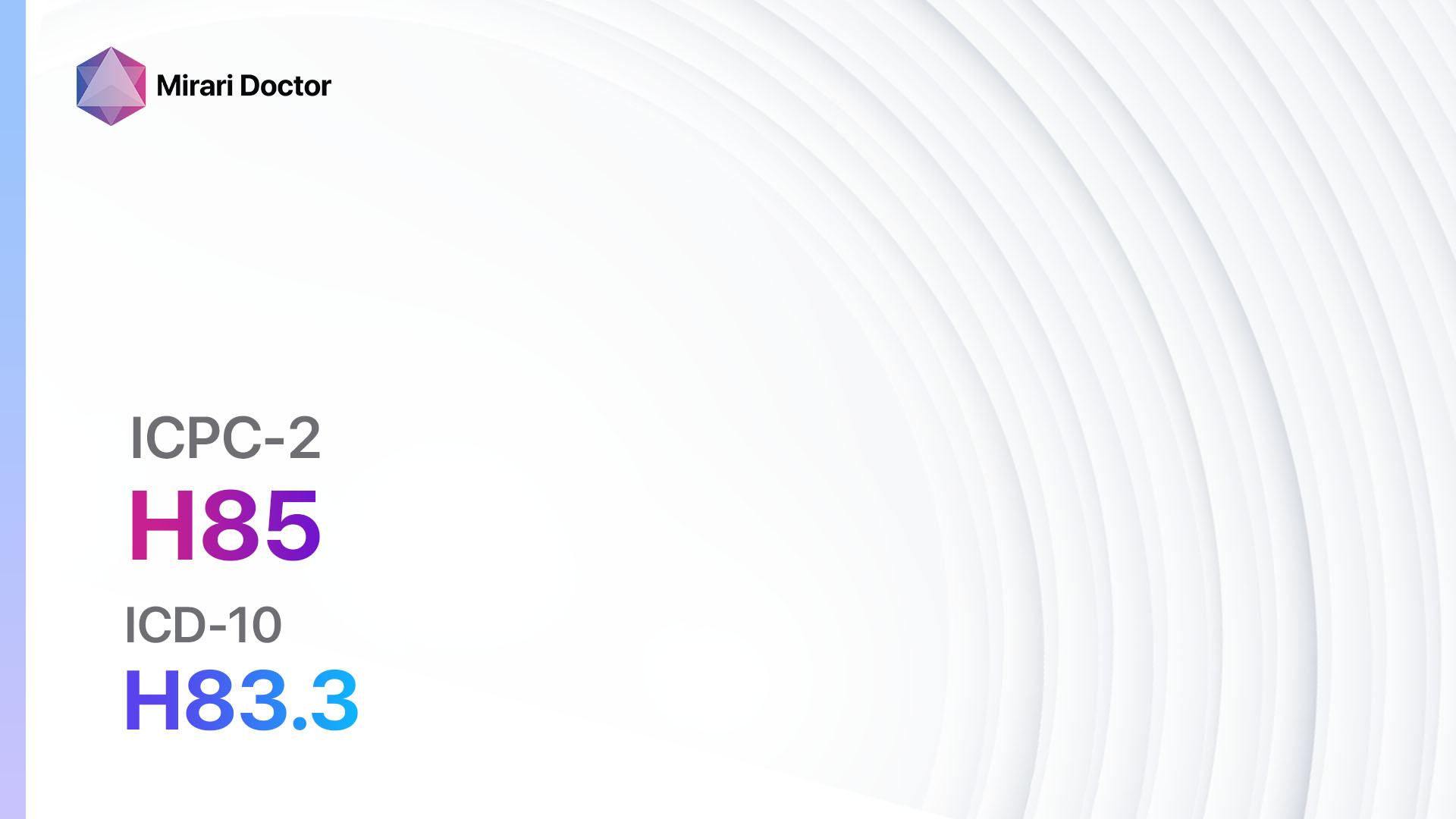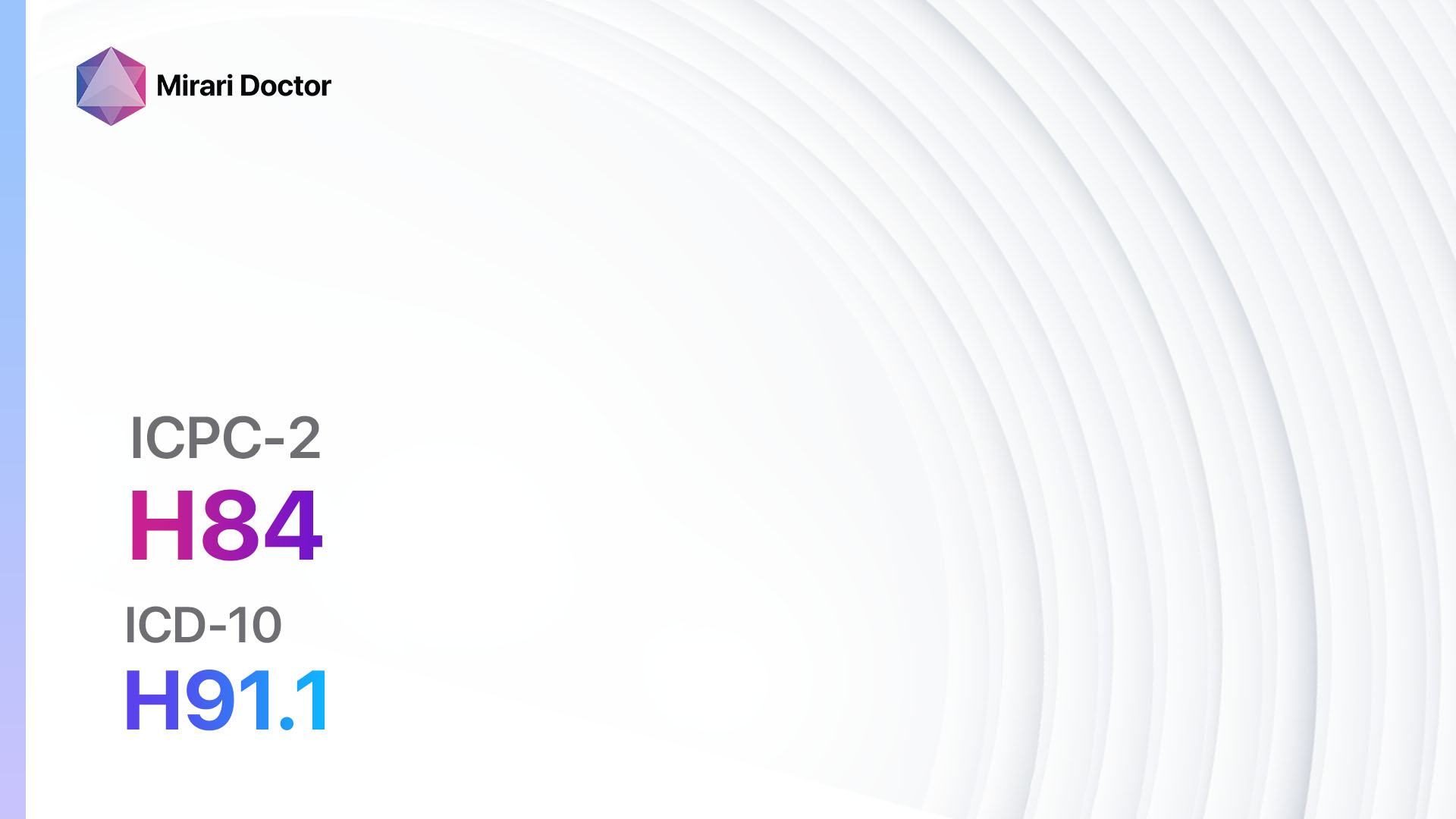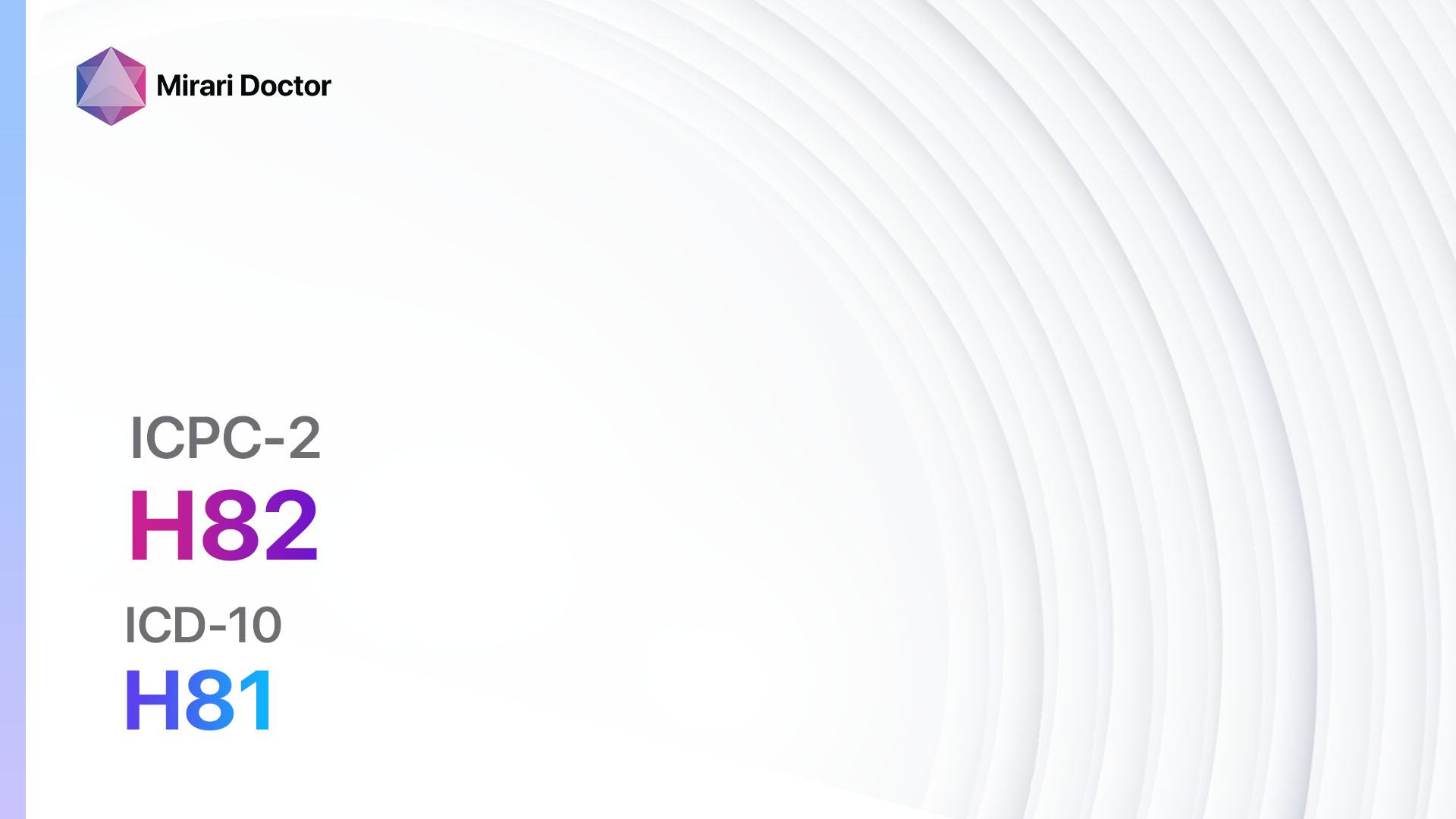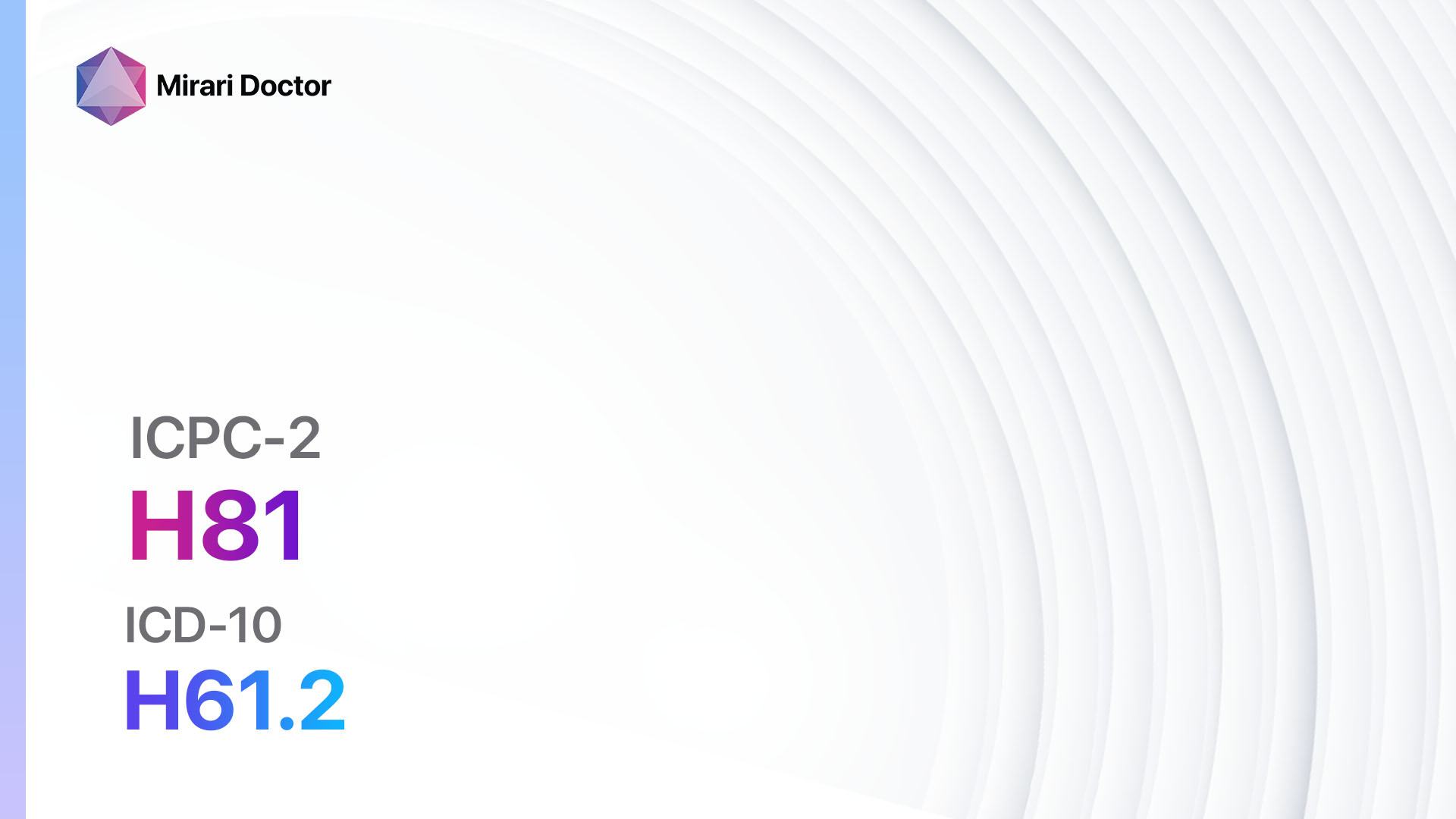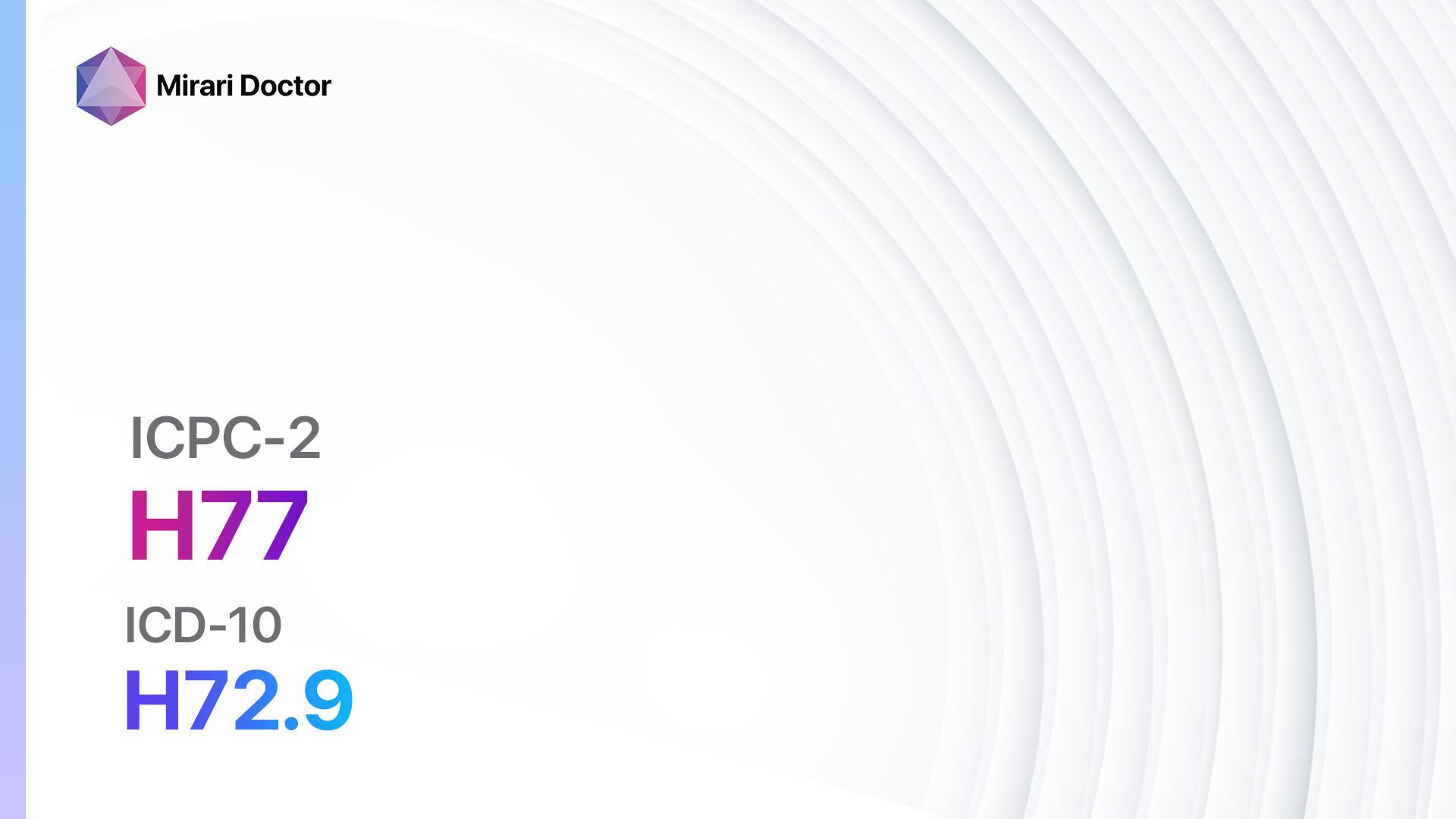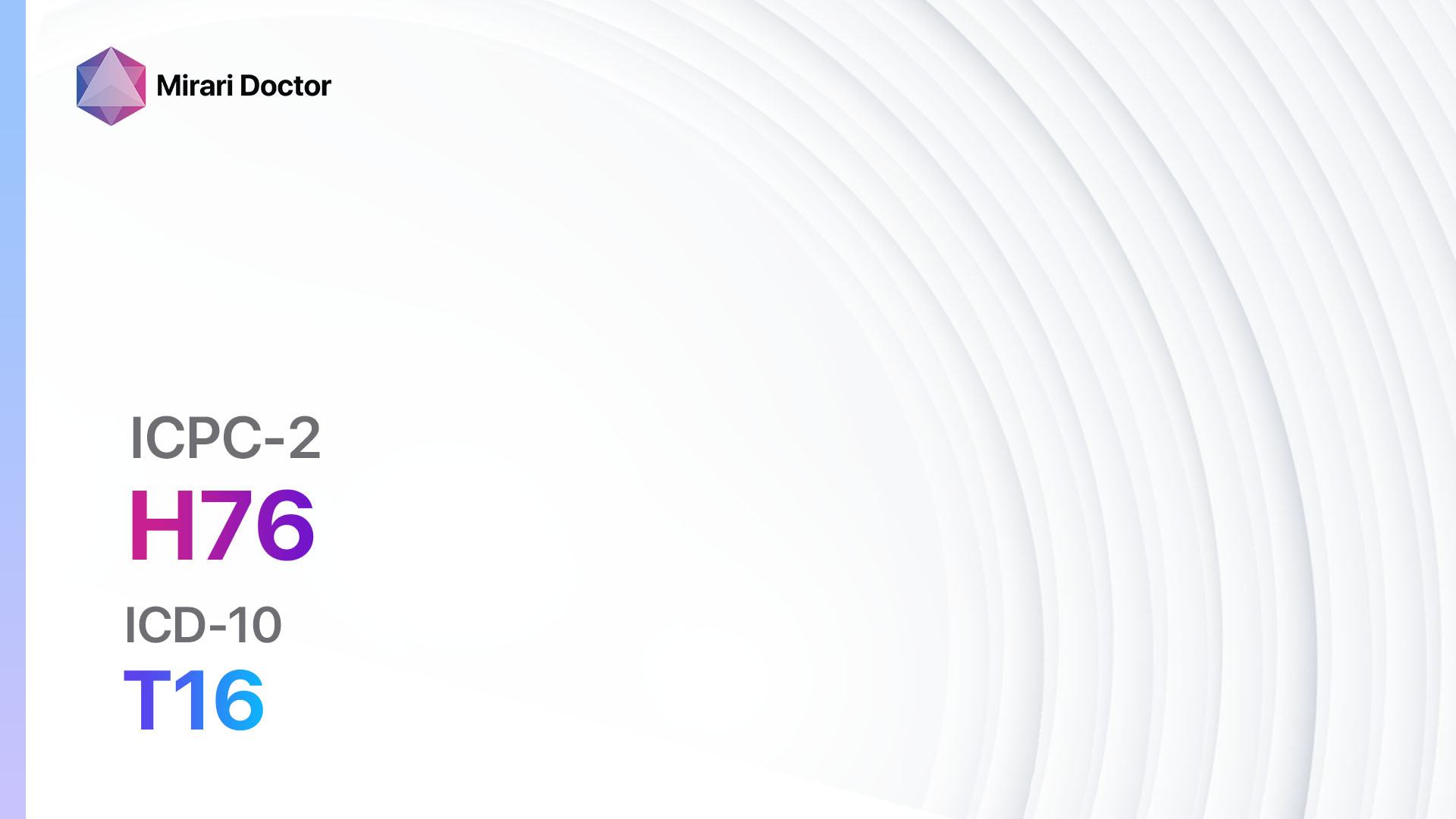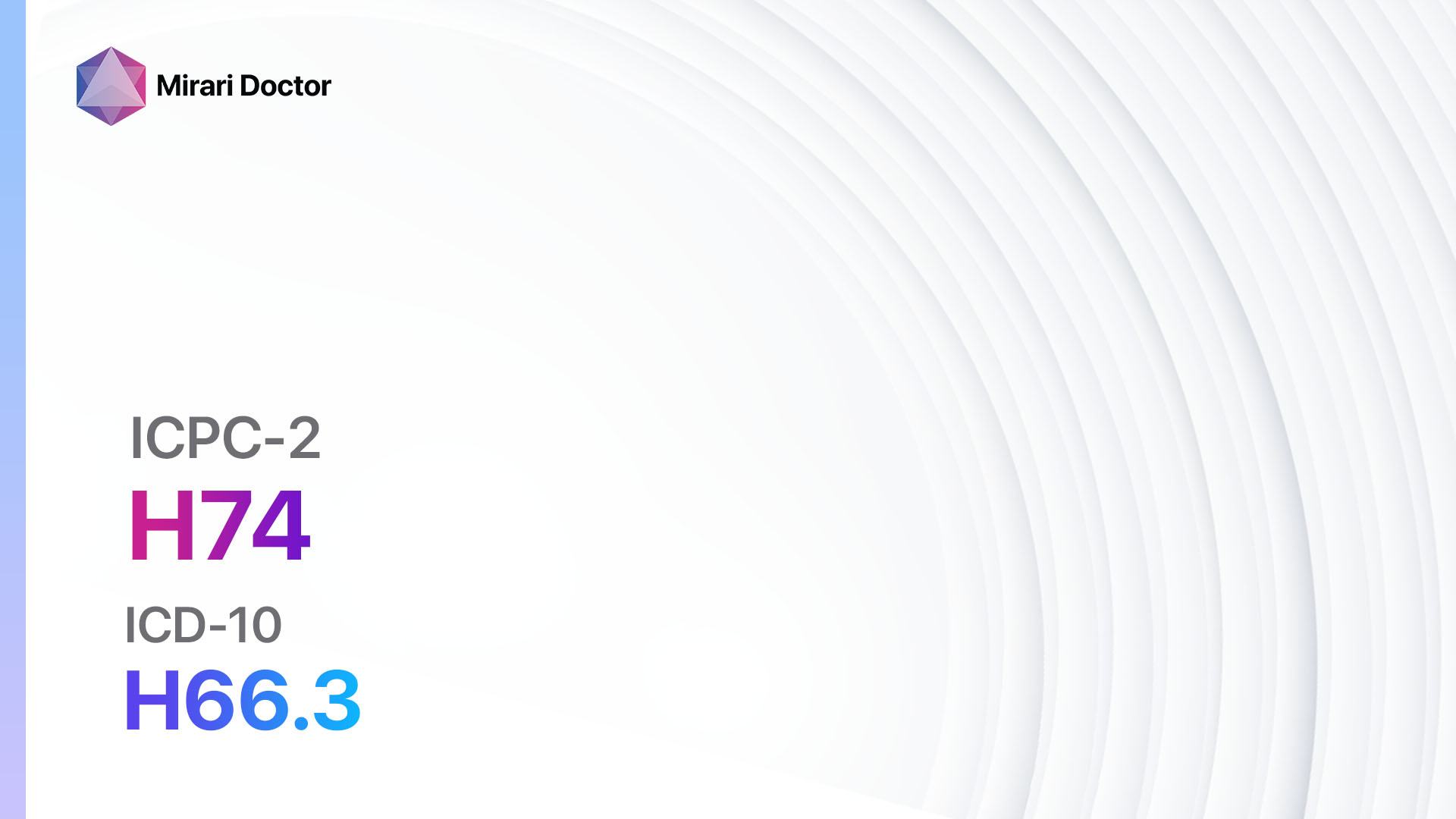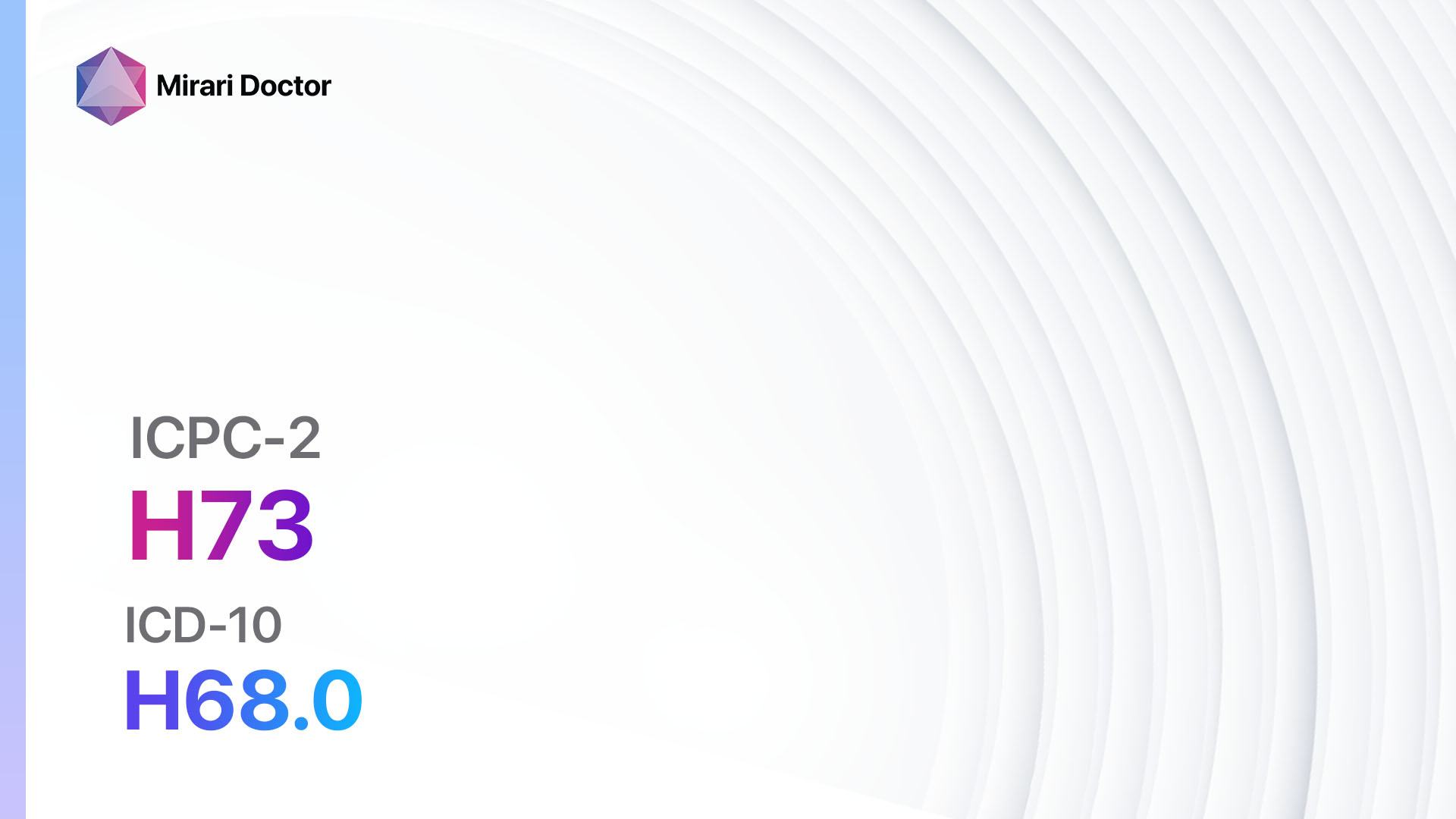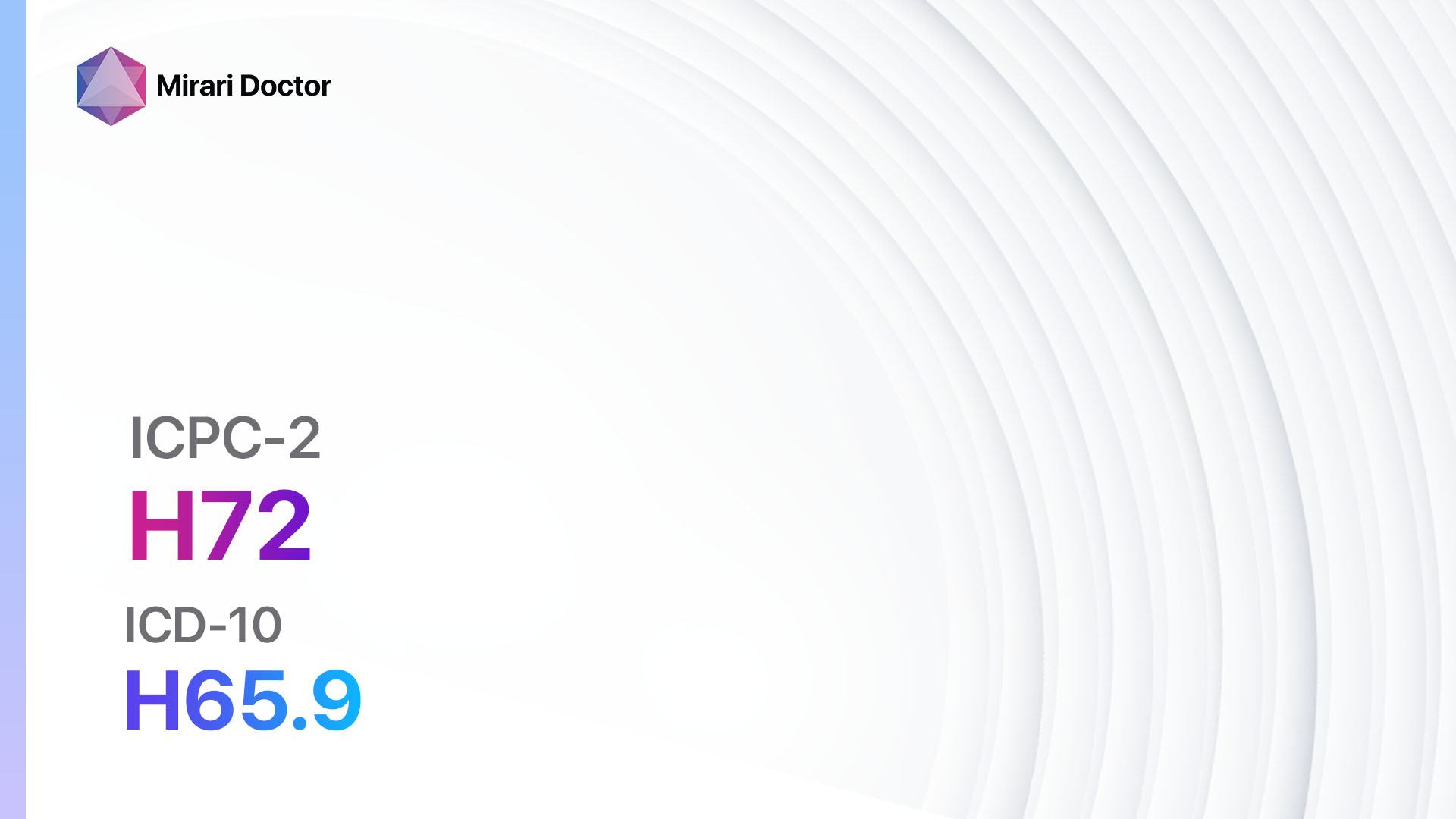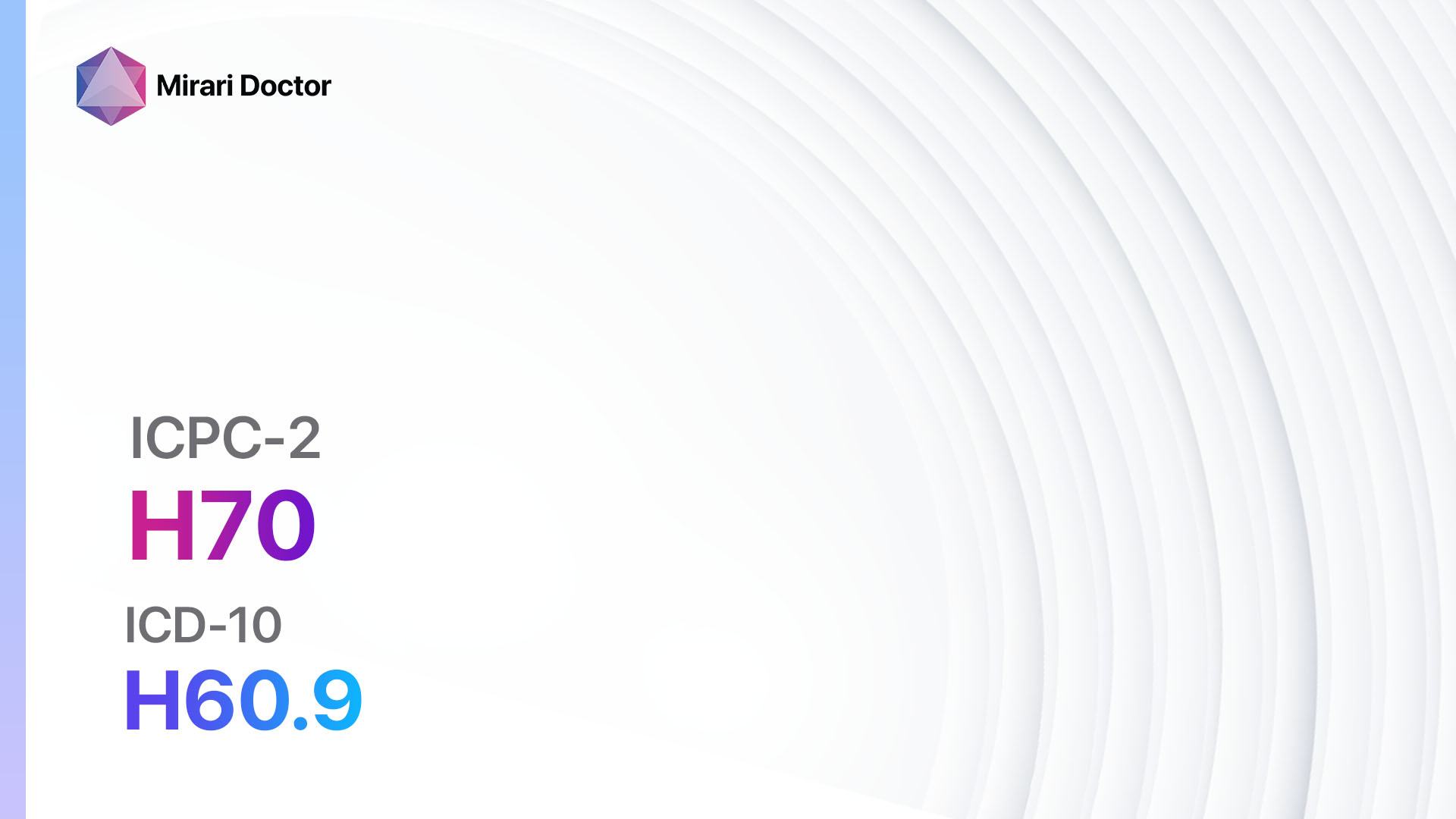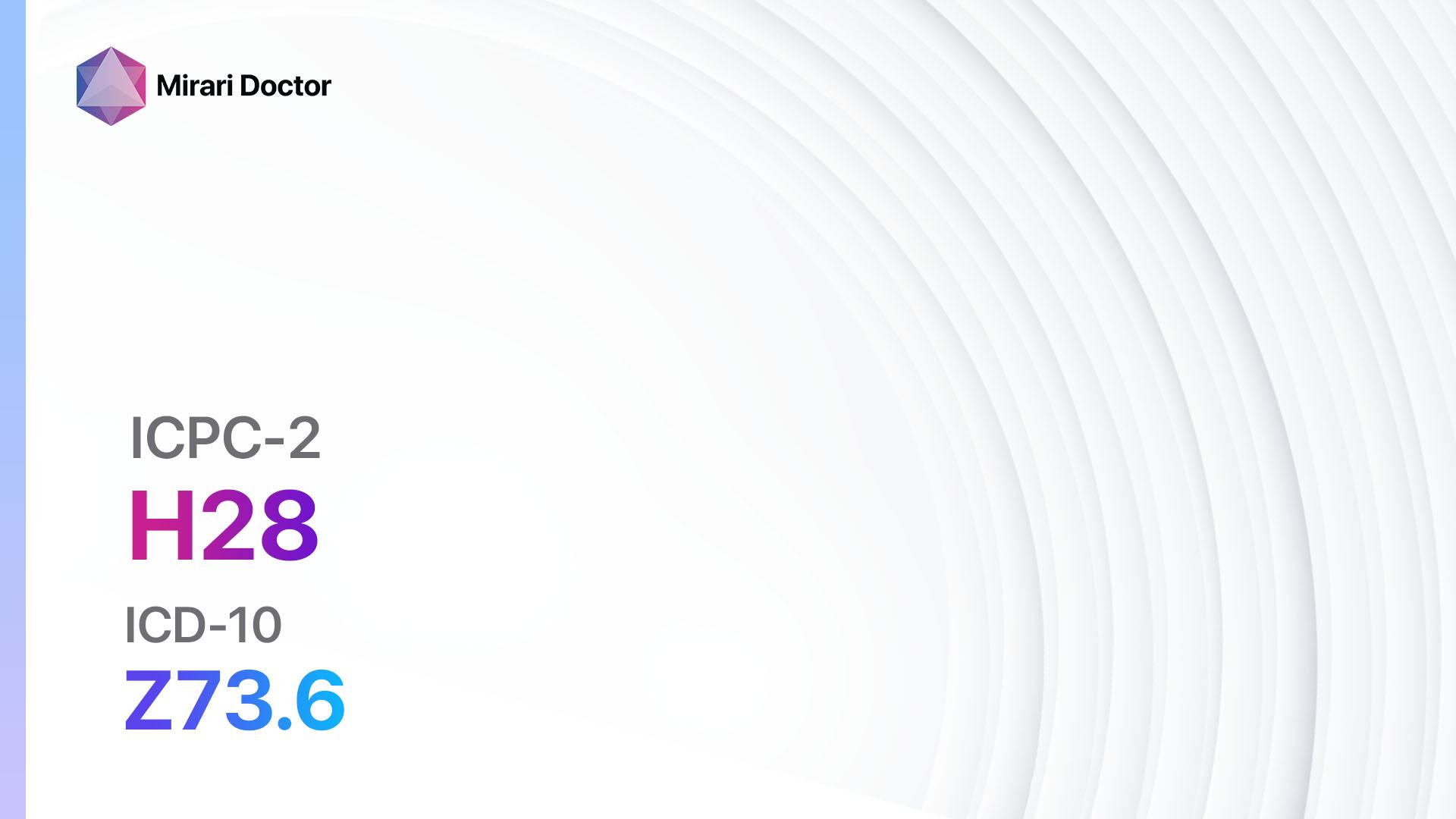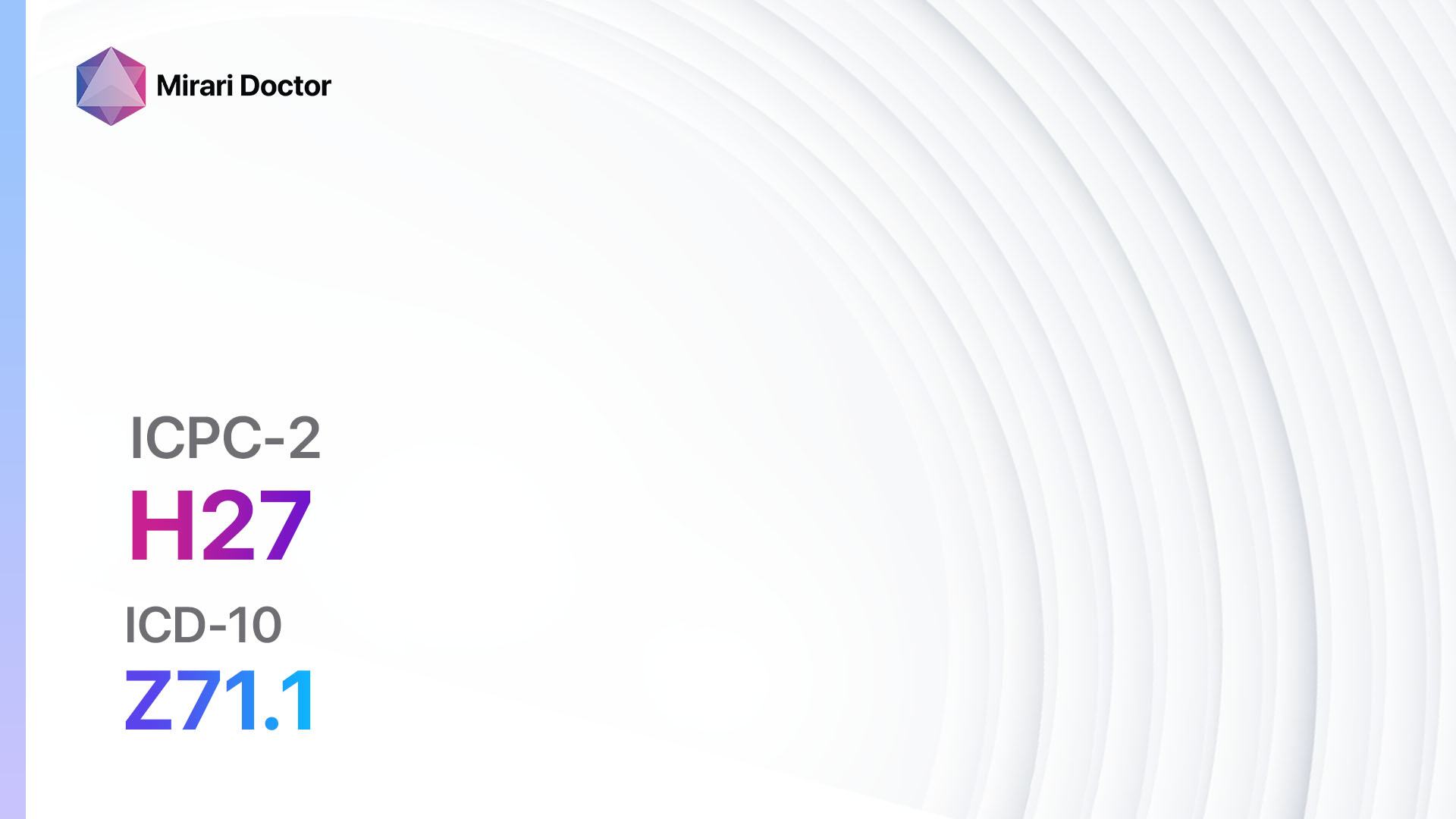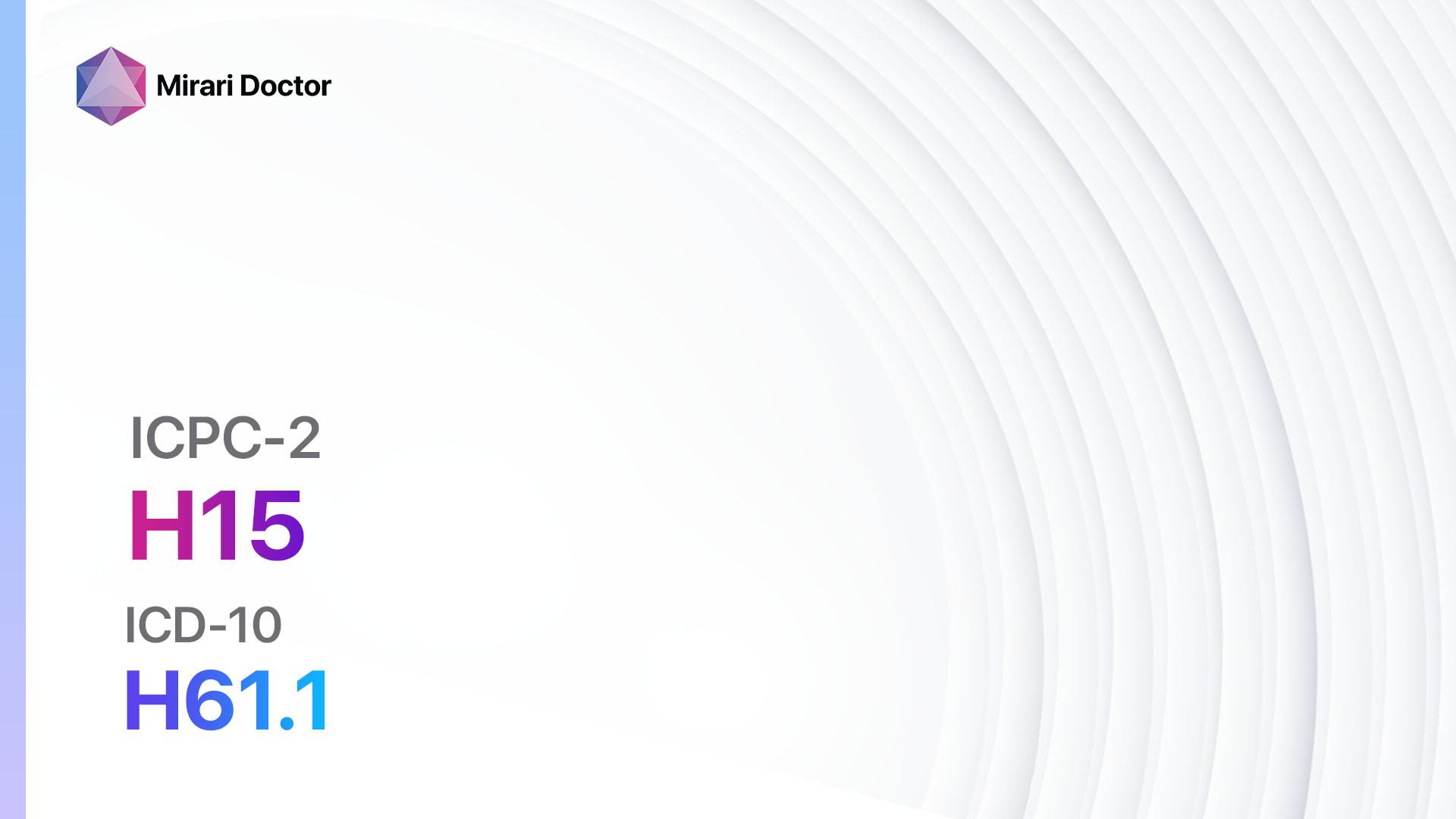
Introduction
Neoplasm of the ear refers to the abnormal growth of cells in the ear, which can be benign or malignant[1]. This condition can cause various symptoms and may require medical intervention for diagnosis and treatment[2]. The aim of this guide is to provide an overview of the symptoms, causes, diagnostic steps, possible interventions, and lifestyle interventions for neoplasm of the ear.
Codes
- ICPC-2 Code: H75 Neoplasm of ear[3]
- ICD-10 Code: D48.1 Neoplasm of uncertain or unknown behaviour of ear[4]
Symptoms
- Ear pain: Patients may experience persistent or intermittent pain in the affected ear[5].
- Hearing loss: Gradual or sudden hearing loss may occur in the affected ear[6].
- Tinnitus: Patients may experience ringing, buzzing, or other noises in the affected ear[7].
- Ear discharge: Discharge from the ear, which may be bloody or pus-like, can occur[8].
- Ear fullness or pressure: Patients may feel a sensation of fullness or pressure in the affected ear[9].
- Facial weakness or paralysis: In some cases, neoplasms of the ear can affect the facial nerve, leading to facial weakness or paralysis[10].
Causes
The exact causes of neoplasms of the ear are not fully understood. However, several factors may contribute to their development:
- Genetic factors: Certain genetic mutations or inherited conditions may increase the risk of developing neoplasms of the ear.
- Environmental factors: Exposure to certain chemicals, radiation, or loud noises may increase the risk of developing neoplasms of the ear.
- Chronic ear infections: Repeated or untreated ear infections may contribute to the development of neoplasms of the ear.
Diagnostic Steps
Medical History
- Gather information about the patient’s symptoms, including the duration, severity, and progression of symptoms.
- Ask about any previous ear infections or treatments.
- Inquire about any family history of ear neoplasms or other related conditions.
- Assess the patient’s overall health and any other medical conditions they may have.
Physical Examination
- Examine the affected ear for any visible abnormalities, such as lumps or lesions.
- Assess the patient’s hearing ability using a tuning fork or audiometry tests.
- Check for any facial weakness or paralysis.
- Palpate the neck and lymph nodes to check for any swelling or tenderness.
Laboratory Tests
- Complete blood count (CBC): To check for any abnormalities or signs of infection.
- Blood chemistry panel: To assess the overall health of the patient and rule out any underlying conditions.
- Tumor markers: Certain blood tests may help identify specific markers associated with ear neoplasms.
Diagnostic Imaging
- Computed tomography (CT) scan: Provides detailed images of the ear and surrounding structures to identify any tumors or abnormalities.
- Magnetic resonance imaging (MRI): Can provide more detailed images of the ear and help determine the extent and location of the neoplasm.
- Positron emission tomography (PET) scan: May be used to assess the spread of the neoplasm to other parts of the body.
Other Tests
- Biopsy: A sample of the neoplasm may be taken for further analysis to determine if it is benign or malignant.
- Fine needle aspiration (FNA): A thin needle is used to extract cells from the neoplasm for examination under a microscope.
- Genetic testing: In some cases, genetic testing may be performed to identify specific mutations associated with ear neoplasms.
Follow-up and Patient Education
- Schedule regular follow-up appointments to monitor the progress of the neoplasm and assess the effectiveness of treatment.
- Provide education to the patient about the condition, treatment options, and potential complications.
- Encourage the patient to report any new or worsening symptoms promptly.
Possible Interventions
Traditional Interventions
Medications:
Top 5 drugs for Neoplasm of ear:
- Cisplatin:
- Cost: $1000-$3000 per cycle.
- Contraindications: Severe kidney disease, hearing loss.
- Side effects: Nausea, vomiting, kidney damage.
- Severe side effects: Hearing loss, nerve damage.
- Drug interactions: Aminoglycoside antibiotics, diuretics.
- Warning: Regular monitoring of kidney function and hearing is required.
- Carboplatin:
- Cost: $500-$1500 per cycle.
- Contraindications: Severe kidney disease, hearing loss.
- Side effects: Nausea, vomiting, kidney damage.
- Severe side effects: Hearing loss, nerve damage.
- Drug interactions: Aminoglycoside antibiotics, diuretics.
- Warning: Regular monitoring of kidney function and hearing is required.
- Cetuximab:
- Cost: $5000-$10,000 per cycle.
- Contraindications: Severe allergic reactions.
- Side effects: Skin rash, diarrhea, infusion reactions.
- Severe side effects: Severe allergic reactions, heart problems.
- Drug interactions: None reported.
- Warning: Infusion reactions may occur during treatment.
- Bevacizumab:
- Cost: $5000-$10,000 per cycle.
- Contraindications: Severe bleeding, recent surgery.
- Side effects: High blood pressure, bleeding, proteinuria.
- Severe side effects: Severe bleeding, gastrointestinal perforation.
- Drug interactions: None reported.
- Warning: Risk of severe bleeding and gastrointestinal perforation.
- Cetuximab + Cisplatin combination therapy:
- Cost: $10,000-$20,000 per cycle.
- Contraindications: Severe allergic reactions, severe kidney disease, hearing loss.
- Side effects: Nausea, vomiting, skin rash, diarrhea.
- Severe side effects: Severe allergic reactions, kidney damage, hearing loss.
- Drug interactions: Aminoglycoside antibiotics, diuretics.
- Warning: Regular monitoring of kidney function, hearing, and skin reactions is required.
Alternative Drugs:
- Docetaxel: A chemotherapy drug that may be used in combination with other medications.
- Methotrexate: Can be used as a single agent or in combination with other drugs for neoplasms of the ear.
- Cyclophosphamide: Often used in combination with other chemotherapy drugs for neoplasms of the ear.
- Etoposide: Can be used alone or in combination with other drugs for neoplasms of the ear.
- Paclitaxel: Another chemotherapy drug that may be used in the treatment of neoplasms of the ear.
Surgical Procedures:
- Excisional biopsy: Surgical removal of the neoplasm for further analysis.
- Tumor resection: Surgical removal of the neoplasm, along with surrounding healthy tissue.
- Lymph node dissection: Removal of nearby lymph nodes to assess for spread of the neoplasm.
- Mastoidectomy: Surgical removal of the mastoid bone to treat neoplasms that have spread to this area.
- Radical neck dissection: Surgical removal of lymph nodes and surrounding tissue in the neck to treat neoplasms that have spread to this area.
Alternative Interventions
- Acupuncture: May help alleviate pain and improve overall well-being. Cost: $60-$120 per session.
- Herbal supplements: Some herbal supplements, such as turmeric and green tea extract, may have potential anti-cancer properties. Cost: Varies depending on the specific supplement.
- Mind-body techniques: Practices such as meditation, yoga, and tai chi may help reduce stress and improve quality of life. Cost: Varies depending on the specific practice and location.
- Nutritional therapy: A diet rich in fruits, vegetables, and whole grains may help support overall health and immune function. Cost: Varies depending on dietary choices.
- Hyperthermia therapy: The use of heat to destroy cancer cells. Cost: $200-$500 per session.
Lifestyle Interventions
- Smoking cessation: Quitting smoking can improve overall health and reduce the risk of complications. Cost: Varies depending on the method used (e.g., nicotine replacement therapy, counseling).
- Healthy diet: Consuming a balanced diet rich in fruits, vegetables, and lean proteins can support overall health and immune function. Cost: Varies depending on dietary choices.
- Regular exercise: Engaging in regular physical activity can improve overall well-being and reduce the risk of complications. Cost: Varies depending on the chosen activity (e.g., gym membership, home workout equipment).
- Stress management: Techniques such as meditation, deep breathing exercises, and relaxation techniques can help reduce stress and improve quality of life. Cost: Varies depending on the chosen method (e.g., meditation app, yoga classes).
- Support groups: Joining a support group or seeking counseling can provide emotional support and help cope with the challenges of neoplasms of the ear. Cost: Varies depending on the chosen support group or counseling service.
It is important to note that the cost ranges provided are approximate and may vary depending on the location and availability of the interventions.
Mirari Cold Plasma Alternative Intervention
Understanding Mirari Cold Plasma
- Safe and Non-Invasive Treatment: Mirari Cold Plasma is a safe and non-invasive treatment option for various skin conditions. It does not require incisions, minimizing the risk of scarring, bleeding, or tissue damage.
- Efficient Extraction of Foreign Bodies: Mirari Cold Plasma facilitates the removal of foreign bodies from the skin by degrading and dissociating organic matter, allowing easier access and extraction.
- Pain Reduction and Comfort: Mirari Cold Plasma has a local analgesic effect, providing pain relief during the treatment, making it more comfortable for the patient.
- Reduced Risk of Infection: Mirari Cold Plasma has antimicrobial properties, effectively killing bacteria and reducing the risk of infection.
- Accelerated Healing and Minimal Scarring: Mirari Cold Plasma stimulates wound healing and tissue regeneration, reducing healing time and minimizing the formation of scars.
Mirari Cold Plasma Prescription
Video instructions for using Mirari Cold Plasma Device – H75 Neoplasm of ear (ICD-10:D48.1)
| Mild | Moderate | Severe |
| Mode setting: 1 (Infection) Location: 0 (Localized) Morning: 15 minutes, Evening: 15 minutes |
Mode setting: 1 (Infection) Location: 0 (Localized) Morning: 30 minutes, Lunch: 30 minutes, Evening: 30 minutes |
Mode setting: 1 (Infection) Location: 0 (Localized) Morning: 30 minutes, Lunch: 30 minutes, Evening: 30 minutes |
| Mode setting: 2 (Wound Healing) Location: 0 (Localized) Morning: 15 minutes, Evening: 15 minutes |
Mode setting: 2 (Wound Healing) Location: 0 (Localized) Morning: 30 minutes, Lunch: 30 minutes, Evening: 30 minutes |
Mode setting: 2 (Wound Healing) Location: 0 (Localized) Morning: 30 minutes, Lunch: 30 minutes, Evening: 30 minutes |
| Mode setting: 3 (Antiviral Therapy) Location: 0 (Localized) Morning: 15 minutes, Evening: 15 minutes |
Mode setting: 3 (Antiviral Therapy) Location: 0 (Localized) Morning: 30 minutes, Lunch: 30 minutes, Evening: 30 minutes |
Mode setting: 3 (Antiviral Therapy) Location: 0 (Localized) Morning: 30 minutes, Lunch: 30 minutes, Evening: 30 minutes |
| Total Morning: 45 minutes approx. $7.50 USD, Evening: 45 minutes approx. $7.50 USD |
Total Morning: 90 minutes approx. $15 USD, Lunch: 90 minutes approx. $15 USD, Evening: 90 minutes approx. $15 USD, |
Total Morning: 90 minutes approx. $15 USD, Lunch: 90 minutes approx. $15 USD, Evening: 90 minutes approx. $15 USD, |
| Usual treatment for 7-60 days approx. $105 USD – $900 USD | Usual treatment for 6-8 weeks approx. $1,890 USD – $2,520 USD |
Usual treatment for 3-6 months approx. $4,050 USD – $8,100 USD
|
 |
|
Use the Mirari Cold Plasma device to treat Neoplasm of ear effectively.
WARNING: MIRARI COLD PLASMA IS DESIGNED FOR THE HUMAN BODY WITHOUT ANY ARTIFICIAL OR THIRD PARTY PRODUCTS. USE OF OTHER PRODUCTS IN COMBINATION WITH MIRARI COLD PLASMA MAY CAUSE UNPREDICTABLE EFFECTS, HARM OR INJURY. PLEASE CONSULT A MEDICAL PROFESSIONAL BEFORE COMBINING ANY OTHER PRODUCTS WITH USE OF MIRARI.
Step 1: Cleanse the Skin
- Start by cleaning the affected area of the skin with a gentle cleanser or mild soap and water. Gently pat the area dry with a clean towel.
Step 2: Prepare the Mirari Cold Plasma device
- Ensure that the Mirari Cold Plasma device is fully charged or has fresh batteries as per the manufacturer’s instructions. Make sure the device is clean and in good working condition.
- Switch on the Mirari device using the power button or by following the specific instructions provided with the device.
- Some Mirari devices may have adjustable settings for intensity or treatment duration. Follow the manufacturer’s instructions to select the appropriate settings based on your needs and the recommended guidelines.
Step 3: Apply the Device
- Place the Mirari device in direct contact with the affected area of the skin. Gently glide or hold the device over the skin surface, ensuring even coverage of the area experiencing.
- Slowly move the Mirari device in a circular motion or follow a specific pattern as indicated in the user manual. This helps ensure thorough treatment coverage.
Step 4: Monitor and Assess:
- Keep track of your progress and evaluate the effectiveness of the Mirari device in managing your Neoplasm of ear. If you have any concerns or notice any adverse reactions, consult with your health care professional.
Note
This guide is for informational purposes only and should not replace the advice of a medical professional. Always consult with your healthcare provider or a qualified medical professional for personal advice, diagnosis, or treatment. Do not solely rely on the information presented here for decisions about your health. Use of this information is at your own risk. The authors of this guide, nor any associated entities or platforms, are not responsible for any potential adverse effects or outcomes based on the content.
Mirari Cold Plasma System Disclaimer
- Purpose: The Mirari Cold Plasma System is a Class 2 medical device designed for use by trained healthcare professionals. It is registered for use in Thailand and Vietnam. It is not intended for use outside of these locations.
- Informational Use: The content and information provided with the device are for educational and informational purposes only. They are not a substitute for professional medical advice or care.
- Variable Outcomes: While the device is approved for specific uses, individual outcomes can differ. We do not assert or guarantee specific medical outcomes.
- Consultation: Prior to utilizing the device or making decisions based on its content, it is essential to consult with a Certified Mirari Tele-Therapist and your medical healthcare provider regarding specific protocols.
- Liability: By using this device, users are acknowledging and accepting all potential risks. Neither the manufacturer nor the distributor will be held accountable for any adverse reactions, injuries, or damages stemming from its use.
- Geographical Availability: This device has received approval for designated purposes by the Thai and Vietnam FDA. As of now, outside of Thailand and Vietnam, the Mirari Cold Plasma System is not available for purchase or use.
References
- Medscape. (2021). Benign Tumors of the Middle Ear. Retrieved from https://emedicine.medscape.com/article/860642-overview
- Mayo Clinic. (2021). Acoustic neuroma – Diagnosis and treatment. Retrieved from https://www.mayoclinic.org/diseases-conditions/acoustic-neuroma/diagnosis-treatment/drc-20356132
- PH3C. (2005). International Classification of Primary Care. Retrieved from http://www.ph3c.org/PH3C/docs/27/000496/0000908.pdf
- Gesund.bund.de. (n.d.). ICD-10 code: D48 Neoplasm of uncertain or unknown behaviour of other and unspecified sites. Retrieved from https://gesund.bund.de/en/icd-code-search/d48
- Amplifon. (n.d.). Ear cancer: types, symptoms and treatment. Retrieved from https://www.amplifon.com/uk/ear-diseases-and-disorders/other-hearing-problems/ear-cancer
- Netmeds. (n.d.). Ear Cancer: Causes, Symptoms And Treatment. Retrieved from https://www.netmeds.com/health-library/post/ear-cancer-causes-symptoms-and-treatment
- Healthline. (2018). Ear Cancer: Symptoms, Pictures, Treatment, Causes, and More. Retrieved from https://www.healthline.com/health/ear-cancer
- Sydney Centre Ear Nose Throat. (n.d.). Tumours Of The Ear. Retrieved from https://sydneycentreent.com.au/ent_conditions/ear-nose-throat-disorders-in-adults/ear/tumours-of-the-ear/
- Hamid Djalilian MD. (n.d.). Chronic Ear Infections. Retrieved from https://hamiddjalilianmd.com/conditions/chronic-ear-infections/
- Frontiers. (2020). Genomics of Otitis Media (OM): Molecular Genetics Approaches to Characterize Disease Pathophysiology. Retrieved from https://www.frontiersin.org/journals/genetics/articles/10.3389/fgene.2020.00313/full
Related articles
Made in USA



